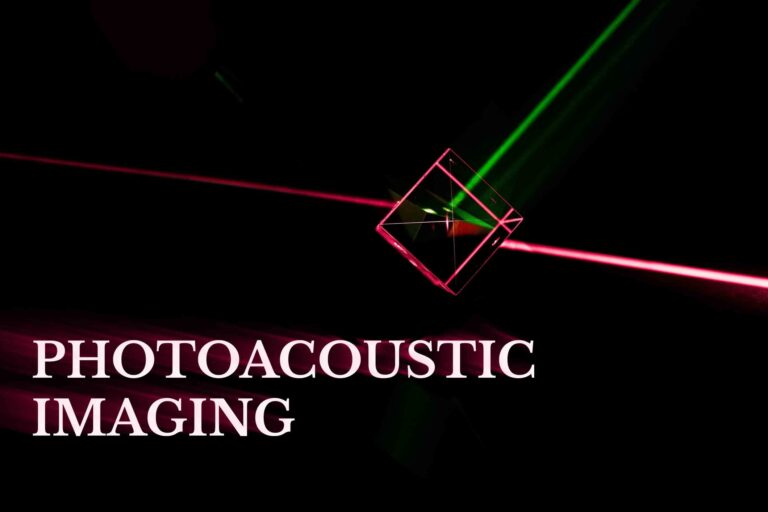Photoacoustic Imaging
Photoacoustic imaging (PAI) represents a significant leap in medical diagnostic technologies, merging the benefits of optical imaging with the depth penetration of ultrasound. This innovative modality capitalises on the photoacoustic effect, where biological tissues absorb light pulses, causing them to emit ultrasonic waves. These waves are then captured to construct detailed images of internal structures, offering a window into the body’s microscopic processes.
The appeal of photoacoustic imaging lies in its ability to provide high-contrast, high-resolution images without the need for ionising radiation. By using light in the near-infrared spectrum, PAI can penetrate several centimetres deep into biological tissues, making it particularly advantageous for visualising vascular structures, tumour environments, and other soft tissues. This capability is crucial for early disease detection and monitoring, enhancing the potential for successful interventions.
Moreover, PAI stands out by enabling the visualisation of tissues’ physiological and molecular composition. This aspect is pivotal in oncology, where understanding the oxygenation and blood supply within tumours can significantly influence treatment decisions. Photoacoustic imaging can also be integrated with other imaging modalities like MRI and ultrasound, creating comprehensive tools that combine structural, functional, and molecular information.
As research advances, the potential applications of photoacoustic imaging continue to expand, promising not only to enhance diagnostic accuracy but also to play a pivotal role in the development of personalised medicine. Through its sophisticated fusion of light and sound, PAI is setting new standards in imaging, paving the way for groundbreaking advancements in healthcare diagnostics.
You are here:
home » Photoacoustic Imaging

